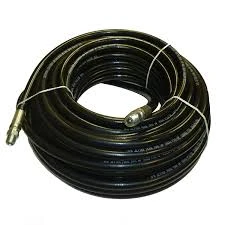Connecting Power Steering Hose to Rack and Pinion System for Optimal Performance
Understanding Power Steering Hose to Rack and Pinion A Vital Connection for Smooth Handling
Power steering systems are integral to modern vehicles, enhancing driver control and comfort. At the core of these systems lies the connection between the power steering hose and the rack and pinion mechanism. This relationship is crucial for ensuring that the vehicle responds promptly and accurately to driver inputs. In this article, we will delve into the significance of this connection, its components, and maintenance considerations.
What is Power Steering?
Power steering assists the driver in steering the vehicle with minimal effort. Unlike manual steering systems that rely solely on mechanical force, power steering utilizes hydraulic or electric actuators to facilitate easier maneuvering. The majority of vehicles on the road today are equipped with hydraulic power steering systems that employ a combination of hydraulic fluid, hoses, and specifically designed components to offer a seamless steering experience.
The Role of the Power Steering Hose
At the heart of the power steering system, the power steering hose serves a pivotal role. It functions as a conduit for hydraulic fluid, which is essential for achieving the necessary force to assist in steering. The power steering hose connects the power steering pump, which generates hydraulic pressure, to the rack and pinion assembly that translates this pressure into mechanical work for steering.
Typically, there are two types of hoses involved in this system the pressure hose and the return hose
.1. Pressure Hose This high-pressure hose carries hydraulic fluid from the pump to the rack and pinion. It withstands significant pressure, making it robust and resistant to wear. 2. Return Hose After the hydraulic fluid has passed through the rack and pinion, it returns to the pump through the return hose. This hose operates at lower pressure, but it still requires durability and resistance to leaks.
power steering hose to rack and pinion

The Rack and Pinion Mechanism
The rack and pinion setup converts the rotational motion of the steering wheel into the linear motion required to turn the vehicle's wheels. The steering wheel's movement is transferred to the pinion gear, which engages with a linear gear known as the rack. When hydraulic fluid pushes against the rack, it moves side to side, causing the wheels to turn. The synergy between the power steering hoses and the rack and pinion is vital; without them, steering would be cumbersome and unresponsive.
Common Issues and Maintenance
While power steering systems are designed to be reliable, issues can arise over time. Common problems associated with the power steering hose and the rack and pinion assembly include
- Leaks Leaking hoses can lead to a drop in hydraulic fluid levels, resulting in reduced steering effectiveness. Regularly inspecting the hoses for signs of wear or damage is essential to prevent such leaks. - Clogs Sometimes, debris can accumulate in the hoses or the system, hindering fluid flow. This can result in increased steering effort and potential damage to the pump.
- Rack and Pinion Wear Over time, the seals and components within the rack and pinion assembly can wear out, leading to misalignment or difficulties in steering. Regular maintenance can help identify issues early and prolong the life of the steering components.
Conclusion
The connection between the power steering hose and the rack and pinion is a crucial aspect of a vehicle's steering system. Understanding this relationship allows drivers to appreciate the engineering behind effortless steering and emphasizes the importance of regular maintenance. By ensuring that power steering hoses are in good condition and that the rack and pinion are properly functioning, drivers can enjoy a safer and more responsive driving experience. Remember, prevention is key—keeping an eye on your power steering system can help you avoid costly repairs and enhance your vehicle's overall performance.
-
Ultimate Spiral Protection for Hoses & CablesNewsJun.26,2025
-
The Ultimate Quick-Connect Solutions for Every NeedNewsJun.26,2025
-
SAE J1401 Brake Hose: Reliable Choice for Safe BrakingNewsJun.26,2025
-
Reliable J2064 A/C Hoses for Real-World Cooling NeedsNewsJun.26,2025
-
Heavy-Duty Sewer Jetting Hoses Built to LastNewsJun.26,2025
-
Fix Power Steering Tube Leaks Fast – Durable & Affordable SolutionNewsJun.26,2025

